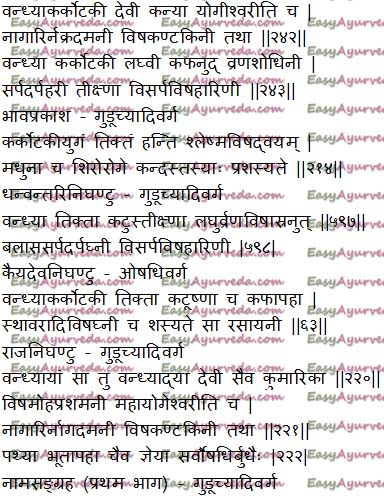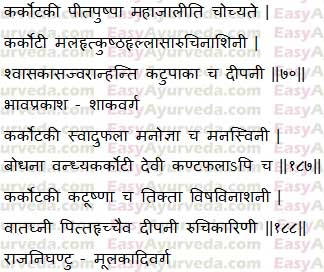Kakoda (Vandya Karkoti – Momordica dioica) Uses, Remedies, Research
By Dr Renita D’Souza
Kakoda (Momordica dioica) is commonly used for both culinary and therapeutic purposes. It is an under-utilized vegetable with high nutritional value. It is used to treat poisoning, herpes, wounds, fever, piles, eye disease, digestive problems, jaundice, asthma, bronchitis, hepatic damages, urinary ailments etc
Table of Contents
Remedies, qualities, uses
Traditional Remedies
- Toasted root or its powder is used to treat bleeding piles.
- In headache, its tubers are used with honey.
- Root juice relieves inflammation caused by lizard excretion. They are also used in mental disorders and digestive ailments.
- Root juice in the dose of 50 ml once a day in empty stomach is given to treat diabetes.
- Root powder applied externally softens skin and reduces excess sweating.
- In snake bite and scorpion stings, root paste is applied externally or nasal instillation (nasya) is done.
- For pain in head, leaves juice is mixed with coconut, pepper, red sandalwood etc , made paste and applied to the head.
- In skin diseases, leaf paste is used both orally and for external application.
- In pimples, tender fruits are rubbed on skin.
- Roasted seeds are used for eczema and other skin problems.
- Fruit, leaves, and tubers are used in India as a folk remedy for diabetes.
- Whole plant is used in eye diseases
- Fresh fruit juice is used for hypertension.
- Fruit cooked in small amount of oil is used to treat diabetes.
- In fever, plant is used as vegetable. In high fever with delirium, its paste is applied externally. It act as sedative.
- In difficulty in urination, roots along with milk is given to drink.
Botanical name – Momordica dioica
Family – Cucurbitaceae
Medicinal Properties of vandya karkotaki
Taste – Bitter (tiktha), Pungent (katu)
Virya (potency) – Hot (ushna)
Qualities
Laghu – light to digest
Tikshna – sharp, penetrating in nature
Effect on Dosha – Balances Kapha dosha (kaphanashak)
Special qualities of Kakoda –
Vrana shodana – cleans wound and helps in quick healing
Sarpadarpahari – used in snake bite
Sthavaradi vishagni – used in poisoning and all toxic conditions
Rasayani – rejuvenative
Indications of Vankakoda
Visha – Poisoning, toxic conditions
Visarpa – herpes
Morphology, pharmacology, distribution
Morphology of Momordica dioica
Momordica dioica is a prennial climbing creeper. Leaves are 3- 10 cm long, cordate, Flowers are yellow, large. Fruits 3 – 7 cm long, covered with soft spine. Roots are tuberous.
It has two different varieties –
Male variety and female variety
Fruited variety and Fruitless variety
Pharmacological activity
Fruits have hypoglycemic, hepato-protective, anti-inflammatory, analgesic, anti-feedant activities, diuretic, laxative,antivenomous, antihypertensive, antiasthmatic, antipyretic, antileprosy, antidiabetic, and antidepressant properties. ,
Leaves possess antihelminthic, aphrodisiac, antihemorroidal, hepatoprotective, antibronchitic, antipyretic, antiasthmatic, and analgesic properties.
Root juice has stimulant, astringent, antiseptic, anti diabetic, anti-inflammatory and antiulcerant effect.
Distribution
Momordica dioica is native to Asia and found extensively in India.
Interaction with medicines, supplements
Can this be used while taking Homeopathic medicine?
Yes. This product does not react with homeopathic medicine.
Can
this medicine be continued while taking supplements like multivitamin tablets,
Omega 3 fatty acids etc?
Yes. Generally, this product goes well with most
of the dietary supplements. However, if you are taking more than one product
per day, please consult your doctor for an opinion.
With western
medicines
Seek your
doctor’s advice if you are taking this product along with other western
(allopathic / modern) medicines. Some Ayurvedic herbs can interact with modern
medicine.
If both Ayurvedic and allopathic medicines are advised together, then it is
best to take Allopathic medicine first, wait for 30 minutes and then take the
Ayurvedic medicine.
Karkoti
In Bhavaprakasha Nighantu, the herb called Karkoti is included in Shakavarga with same botanical description as Mormordica dioica but its medicinal qualities and Sanskrit synonyms varies from Vandya karkoti mentioned in Guduchyadi varga.
Medicinal Qualities of Karkotaki
Taste – pungent, bitter
Virya (potency) – hot
Vipaka (taste conversion after digestion) – pungent
Deepana – kindles digestive fire
Malahara – reduces the excreta quantity
Effect on Tridoshas
Balances vata dosha and increases pitta dosha.
Indications
Kushta – skin diseases
Hrillasa – nausea
Aruchi – anorexia
Shwasa – asthma, breathing difficulty
Kasa – cough
Jwara – fever
Visha – poisoning, toxic conditions
Uses of Karkotaki
Karkoti tubers are styptic in nature and used in bleeding piles. In diabetes, tuber powder along with Vanga bhasma is given. It causes vomiting in excess dose.
In fever with irrelevant talk (pralapa), it is crushed and applied over the body. The fruit powder or infusion is used for nasal instillation.
Dose – 2 – 5 grams with sugar.
Sanskrit Synonyms of Karkoti
Karkotaki, Peethapushpa, Mahajaali
Classical Categorization of Karkotaki
Bhavaprakasha Nighantu – Shakavarga
Raja Nighantu – Mulakadi varga
Sanskrit verse, Research, Vernacular

Sanskrit Verses for Karkotaki

Bio-active Compounds
Momordica dioica contains Phenols, Saponins, Alkaloids, Flavonoids, Anthraquinones, Cardiac glycosides, Carbohydrates, Triterpenoids and Steroids.
Research
1. Study articles describing Phytochemical components, biological activities, and Phytotherapeutical study of Momordica dioica (read more – 1, 2)
2. Anti diabetic and renal protective Effect – A study conducted to investigate antidiabetic and renal protective effect of Momordica dioica extract (MDMtE) in streptozotocin-diabetic rats have proved that the drug protects the kidney in diabetes.
Names in different languages
English Name – spiny gourd, spine gourd, Teasle Gourd, Small bitter-gourd
Hindi Name – Kakoda, Ban Kakoda, Banykakod, Vankakod, Junglee karela, kakrol
Bengal Name – Tikthakarola
Marathi Name – Vanjkatoli, Kartole
Gujarati Name – Kankodi, Kankoda
Kannada Name – Mada haagala kaayi
Tamil Name – Paluppakaayi, pazhu-pakal, mezhuku-pakal
Telugu Name – Aagaakar, Boda kakara
Oriya Name – Kankada
Konkani Name – Phagil, chattel
Sri Lankan – Thumba
Sanskrit synonyms
Vandyakarkotaki, devi, kanya,
Yogishvari, Nagaari
Nakradamani, Vishakantakini
Kumarika, Manojna, Vishakantaki
Pathya, divya, Putradatri
Sukanda, Shrikanda
Kandavallishvari, Sarpadamani
Bhutahantri
Classical categorisation
Bhavaprakasha Nighantu – Guduchyadi Varga
Dhanvantari Nighantu – Guduchyadi Varga
Kaiyadeva Nighantu – Aushadi varga
Raja Nighantu – Guduchyadi Varga
Shodala Nighantu – Guduchyadi Varga
Click to Consult Dr Renita D’Souza









